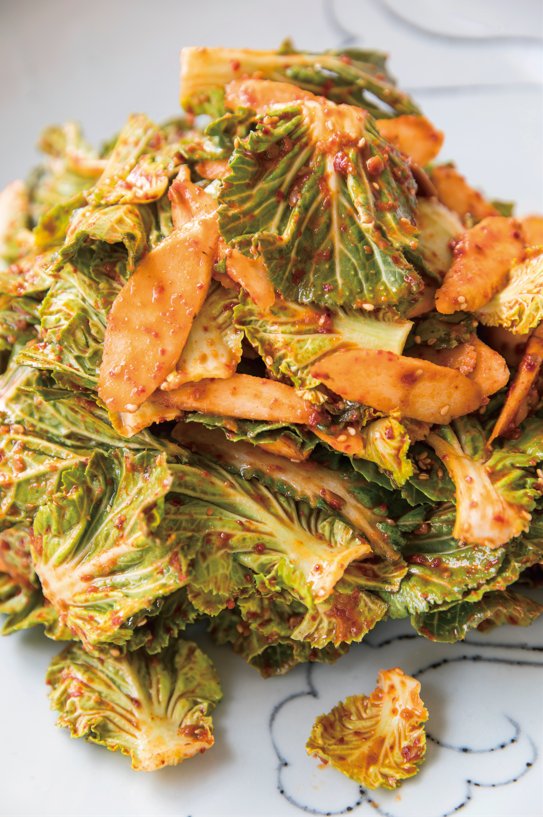 |
Fresh kimchi with Bomdong and deodeok in doenjang sauce (Cultural Corps of Korean Buddhism) |
Society attributes a variety of adjectives to temple food such as healthy, natural and cleaner. Are such words accurate?
Ven. Dorim, who teaches at Hyangjeok Segye, a culinary art institute operated by the Cultural Corps of Korean Buddhism, disagrees, saying, “Temple food is not that grand.”
Monastics use the same ingredients that Koreans used to eat in leaner times and prepare them in ways to enhance the taste.
Temple food is neither extravagant nor special. The most important factor in temple food is the person who prepares it, according to Dorim.
The dish fresh kimchi with bomdong and deodeok in doenjang sauce already hints at the special taste of the sauce.
Dorim’s savory doenjang heightened the flavor of the fresh kimchi. Her skilled hands create food that is not too pungent but still alive with flavor. Her cooking style is very simple.
To think that temple food has some special ingredient is a misconception. The simpler the preparation, the better the flavor.
Fresh kimchi with bomdong and deodeok in doenjang sauce
Ingredients - 300 grams bomdong (early spring cabbage)
- 200 grams deodeok (bonnet bellflower roots)
- 2 tbs doenjang (Korean miso)
- 2 tbs red pepper powder
- 2 tbs house soy sauce (salty soy sauce)
- 3 tbs Chinese wild peach syrup
- 2 tbs sesame oil
- 2 tbs crushed
- roasted sesame seeds
- vegetable broth
Directions1. Wash bomdong and tear into bite-sized pieces.
2. Peel deodeok and cut diagonally into thin slices.
3. Add seasonings and mix well.
Provided by Cultural Corps of Korean Buddhism
-------------------------------------------------------------------
Temple food is food of the ascetics who express gratitude for all forms of life and wish for peace for the whole world. The Cultural Corps of Korean Buddhism operates the Korean Temple Food Center where guests can learn and experience temple food. -- Ed.By Korea Herald (
khnews@heraldcorp.com)








![[Today’s K-pop] Blackpink’s Jennie, Lisa invited to Coachella as solo acts](http://res.heraldm.com/phpwas/restmb_idxmake.php?idx=644&simg=/content/image/2024/11/21/20241121050099_0.jpg)